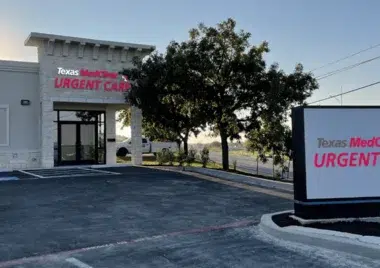Just How Urgent Care Clinics Enhance Accessibility to Healthcare for Sufferers With Immediate but Non-Emergent Medical Needs
Urgent care facilities have arised as a critical element in the medical care landscape, dealing with the demands of people who call for immediate interest for non-emergent problems. By operating beyond standard office hours and providing a streamlined strategy to small injuries and ailments, these facilities not only decrease the burden on emergency divisions however also improve total patient access to timely treatment. As we take into consideration the implications of this version, it comes to be crucial to take a look at exactly how urgent care facilities are changing client experiences and results in ways that merit additional expedition.
Role of Urgent Care Clinics
Urgent care clinics play a vital duty in the medical care system by giving instant and available clinical services for non-life-threatening problems. These facilities work as an important bridge in between medical care providers and emergency divisions, effectively easing the problem on medical facilities while making certain patients obtain prompt treatment. By running extended hours, including nights and weekend breaks, urgent treatment facilities provide to individuals who might not have the adaptability to visit a standard medical professional's office during typical service hours.
The spectrum of services supplied at urgent care clinics includes therapy for small injuries, diseases, and diagnostic solutions such as X-rays and lab tests. This breadth of care permits patients to deal with a range of health and wellness problems without the long haul times generally connected with emergency spaces. Urgent treatment clinics commonly employ a diverse group of health care experts, including medical professionals, nurse specialists, and physician aides, who are outfitted to take care of numerous clinical circumstances.
Benefits of Immediate Access

Additionally, immediate accessibility lowers the worry on medical care providers and emergency situation divisions by diverting less critical instances to proper settings. This minimizes overcrowding in emergency clinic, enabling those with true emergency situations to get the urgent care they require without unnecessary hold-ups.
Additionally, the convenience of extensive hours and walk-in accessibility implies that patients can look for care without the need for consultations, which is especially useful for individuals with unpredictable timetables or those that may experience abrupt health and wellness issues. - Urgent Care
The accessibility of immediate care facilities promotes a proactive strategy to health and wellness, encouraging people to seek clinical suggestions and treatment earlier instead of later. This not just enhances client satisfaction but also advertises a culture of preventive care, eventually causing much healthier communities.
Contrast With Emergency Clinic
Often, people find themselves not sure whether to visit an immediate care facility or an emergency situation area when faced with a medical concern. Urgent treatment facilities are designed to deal with prompt but non-emergent clinical issues, such as small injuries, infections, or diseases.
On the other hand, emergency rooms are geared up to handle deadly circumstances and serious medical emergencies, such as cardiac arrest, strokes, or significant injury. These facilities provide advanced analysis devices and expert assessments, which can my link lead to much longer wait times for people with much less vital problems. On average, emergency rooms tend to be a lot more pricey than immediate care facilities, making urgent care a more cost-effective alternative for non-emergent requirements.
Eventually, while both urgent care facilities and emergency clinic play crucial functions in the healthcare system, understanding their corresponding functions permits individuals to select the suitable setting based upon the urgency and nature of their clinical problems.
Services Offered by Urgent Care
Immediate treatment clinics offer a wide range of solutions customized to resolve non-emergent clinical demands, making them a convenient option for clients seeking timely attention. These centers are geared up to handle various conditions, consisting of minor fractures, strains, and lacerations, which need prompt care yet do not necessitate emergency area additional info intervention.
Furthermore, urgent care clinics offer diagnostic services such as X-rays and laboratory tests, enabling quicker evaluation and treatment of diseases. Patients often existing with common conditions like colds, flu, and infections, which can be successfully handled on-site. Furthermore, immediate care centers frequently give preventive solutions, including inoculations and health and wellness screenings, adding to overall public health and wellness.
An additional vital service provided is the administration of persistent problems exacerbated by severe signs, such as bronchial asthma or diabetes mellitus, guaranteeing people obtain timely care without overwhelming emergency situation solutions. Many centers likewise expand their hours past conventional workplace timetables, enhancing access for patients that might require treatment during weekend breaks or evenings.
Improving Person End Results

Urgent care facilities are outfitted to manage a variety of non-emergent medical concerns, consisting of minor injuries, infections, and illnesses. Their emphasis on easily accessible, premium care permits individuals to get suitable therapies and preventative solutions, promoting better wellness administration. Moreover, these facilities typically employ a multidisciplinary strategy, integrating numerous health care professionals to make certain detailed care.
Person education and learning is additionally a crucial component of boosting outcomes. Immediate care providers frequently use guidance on follow-up care, preventative steps, and lifestyle alterations, empowering page people to take an active function in their wellness. As a result, the mix of instant access, professional treatment, and person education not only improves complete satisfaction however also results in boosted long-term wellness outcomes, strengthening the worth of urgent treatment facilities in the healthcare continuum.
Conclusion
In summary, immediate care clinics serve a vital duty in enhancing medical care gain access to for patients with instant, non-emergent medical requirements. Ultimately, immediate treatment facilities are essential in connecting the gap in between key care and emergency situation services, making certain obtainable and reliable healthcare for areas.
On average, emergency areas tend to be a lot more pricey than urgent treatment facilities, making urgent care an extra cost-effective choice for non-emergent demands. (Urgent Care)

Ultimately, immediate care centers are vital in bridging the void between primary treatment and emergency solutions, making sure efficient and accessible medical care for communities.